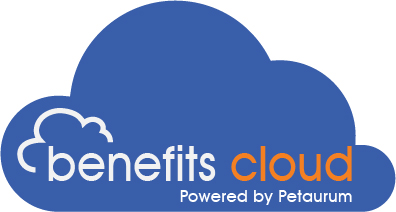Finding and hiring the right people for your business takes time, effort, and often a lot of resources. So naturally, once you’ve built a team of people who do brilliant things and you can trust wholeheartedly, the last thing you want is for them to become unhappy and move on to greener pastures.
Now, at this point, we’ve all heard about how important employee engagement is.
So it may come as a surprise to hear that Gallup, in its State of the Global Workplace report, found that 85% of employees are not actively engaged at work.
The challenge of motivating staff is real, and it’s affecting businesses of all sizes across every industry. As work environments evolve with remote and hybrid models becoming commonplace, keeping employees motivated requires thoughtful strategies that address both traditional and up-and-coming workplace dynamics.
This article explores five proven ways to motivate employees, boost engagement, and create a workplace where people genuinely want to contribute their best efforts.
1. Create a Positive and Inclusive Workplace Culture
A company’s culture forms the foundation for employee motivation. When people feel they belong and their contributions matter, their intrinsic motivation naturally increases.
What defines a positive workplace culture?
Positive workplace cultures share several key characteristics:
- Psychological safety: Employees feel comfortable sharing ideas and taking risks without fear of punishment or ridicule.
- Clear values: The organisation has well-defined principles that guide decision-making.
- Inclusivity: Diverse perspectives are welcomed and valued.
- Purpose-driven work: Employees understand how their efforts connect to larger goals.
Research by Deloitte found that 94% of executives and 88% of employees believe a distinct workplace culture is important to business success. Yet many organisations struggle to intentionally shape their culture.
How to build a positive culture
Creating a motivating culture requires deliberate effort:
- Start with leadership: Culture flows from the top down. Leaders must model the behaviours they wish to see.
- Involve employees in defining values: When team members help shape cultural values, they’re more invested in upholding them.
- Recognise and celebrate culture champions: Highlight employees who embody your cultural ideals.
- Address toxic behaviours quickly: Nothing undermines culture faster than allowing negative behaviours to continue unchecked.
2. Implement Meaningful Recognition Programs
Employee recognition is perhaps the most powerful and inexpensive (yet underutilised) motivation tool available to organisations.
Recognition works because it satisfies fundamental human needs:
- Validation: Confirmation that one’s work matters.
- Belonging: Feeling connected to the team and organisation.
- Self-Esteem: Building confidence and self-worth.
- Accomplishment: Acknowledging progress and achievement.
When these needs are met, employees experience greater job satisfaction and motivation.
The Most Effective Way to Give Recognition
Not all recognition programs deliver the same impact. The most effective approaches are:
- Timely: Recognition delivered soon after the achievement has a greater impact than delayed acknowledgement.
- Specific: Detailed praise that identifies exactly what was done well is more meaningful than generic compliments.
- Authentic: Sincere recognition resonates more deeply than obligatory praise.
- Personalised: Recognition tailored to individual preferences (public vs. private, tangible rewards vs. verbal praise) shows thoughtfulness.
- Inclusive: Programs should allow peer-to-peer recognition, not just top-down appreciation.
As explored in our article on why recognition matters, effective recognition doesn’t have to be expensive. Simple, consistent acknowledgement often provides more motivation than infrequent grand gestures.
3. Provide Growth and Development Opportunities
Today’s employees value learning and advancement opportunities more than ever before. When employees see a clear path for growth within their organisation, they’re more likely to:
- Remain engaged and motivated in their current role.
- Go above and beyond basic job requirements.
- Develop innovative solutions to problems.
- Stay with the company longer.
Conversely, the perception of being “stuck” without advancement opportunities is one of the top reasons talented employees leave.
Effective development strategies
Creating motivating growth opportunities requires a multifaceted approach:
- Individual development plans: Collaboratively create roadmaps for each employee’s growth.
- Varied learning formats: Offer a mix of formal training, self-directed learning, mentoring, and on-the-job experiences.
- Stretch assignments: Provide challenging projects that build new skills and visibility.
- Cross-functional exposure: Allow employees to work with different teams to broaden their understanding of the business.
- Regular feedback: Provide ongoing coaching rather than waiting for annual reviews.
The most important aspect of development programs is alignment—ensuring that growth opportunities support both organisational needs and individual career goals. When these align, motivation naturally follows.
4. Offer Flexible and Personalised Benefits
The days of one-size-fits-all benefits packages are over. Today’s diverse workforce has equally diverse needs and priorities. A personalised approach to benefits can dramatically increase their perceived value and motivational impact.
Why personalisation matters
Employees at different life stages and with different priorities value benefits differently:
- A young parent might prioritise childcare support and flexible scheduling.
- An employee managing a health condition might value comprehensive medical coverage.
- A mid-career professional might be focused on retirement planning.
- A recent graduate might prioritise student loan assistance.
When employees can choose benefits that address their specific needs, they feel more valued and supported by their employer.
Creating flexible benefits packages
Effective flexible benefits packages include:
- Core benefits: Essential coverages provided to all employees.
- Flexible allowances: Credits that employees can allocate to additional benefits based on their preferences.
- Lifestyle benefits: Non-traditional perks that support wellbeing and work-life balance.
- Regular reassessment: Opportunities for employees to adjust selections as their needs change.
Our Benefits Cloud platform specialises in helping companies deliver personalised benefits packages that reward teams while simplifying the admin – a win-win for everyone involved!
5. Foster Open Communication and Feedback
Open communication builds trust, and trust is the foundation of a motivated workforce. When employees believe their voices matter and leadership is transparent, they’re more likely to feel invested in the organisation’s success.
The impact of communication on motivation
Effective communication affects motivation in several ways:
- Clarity of purpose: Understanding how individual efforts connect to company goals.
- Problem-solving: Identifying and addressing issues before they affect morale.
- Innovation: Encouraging the free flow of ideas for improvement.
- Trust building: Creating confidence in leadership and organisational direction.
Research consistently shows that companies with transparent communication practices experience higher employee engagement and better performance.
Building effective communication systems
Developing a culture of open communication requires:
- Multiple feedback channels: Anonymous surveys, suggestion boxes, and one-on-one meetings provide various ways for employees to share their thoughts.
- Active listening: Demonstrating that feedback is valued by acknowledging it and taking action when appropriate.
- Regular updates: Keeping employees informed about company developments, challenges, and successes.
- Two-way dialogue: Ensuring communication flows up the organisation as freely as it flows down.
- Follow-through: Acting on feedback when possible and explaining when changes can’t be implemented.
The most important aspect of communication is consistency. Sporadic efforts may create initial enthusiasm but ultimately lead to cynicism if not maintained.
Implementation Checklist: Getting Started with Employee Motivation
Ready to enhance motivation in your organisation? This checklist provides practical starting points for each strategy:
Culture Assessment and Development
- Conduct an anonymous culture survey to identify strengths and weaknesses.
- Define core values with employee input.
- Train managers on culture-building practices.
- Create regular culture-building activities and events.
- Measure chosen culture metrics quarterly.
Recognition Program Development
- Survey employees about preferred recognition methods.
- Implement both formal and informal recognition channels.
- Create a recognition and reward budget.
- Train managers on effective recognition practices.
- Establish regular recognition events (weekly, monthly, quarterly).
Growth and Development
- Create individual development plans for all employees.
- Establish a resource library.
- Implement mentoring or coaching programs.
- Schedule regular career conversations.
- Connect development to clear advancement paths.
Benefits Offerings
- Conduct a benefits satisfaction survey.
- Implement a flexible benefits package or platform.
- Communicate the benefits value clearly and regularly.
- Gather feedback on desired future benefits.
- Review and adjust your benefits package annually.
Communication Enhancement
- Establish regular team meetings.
- Create anonymous feedback channels.
- Train managers on effective one-on-one conversations.
- Implement a knowledge-sharing platform.
- Regularly share company goals, challenges, and successes.
Building a Sustainable Motivation Strategy
The most effective motivation strategies aren’t one-time initiatives but ongoing commitments. Creating sustained motivation requires:
- Consistency: Sporadic efforts often do more harm than good.
- Measurement of results: Tracking engagement, retention, and productivity metrics.
- Adaptation to feedback: Willingness to adjust approaches based on what works.
- Leadership commitment: Active involvement from senior leaders.
- Integration with business strategy: Alignment of motivation initiatives with organisational goals.
Remember, what motivates employees changes over time.
What motivates employees isn’t static. Personal circumstances evolve, workplace dynamics shift, and generational preferences change.
The most successful organisations continually reassess how they motivate their teams to ensure their methods remain relevant and effective.
The one constant is that employees who feel valued, supported, and connected to purpose will always be more motivated than those who don’t. By implementing the five steps outlined in this article, you create the conditions for sustainable motivation that drive business and personal success.
Ready to boost employee motivation in your business? Contact Benefits Cloud today to learn how our platform can support you.

